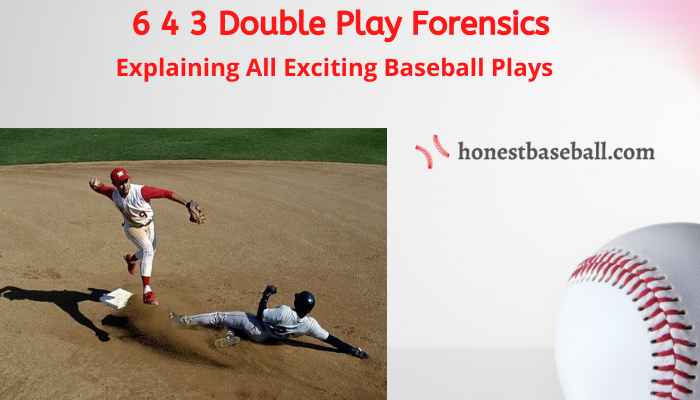Double plays are undoubtedly one of the most exciting moments in baseball games. The event is common but does not happen as frequently as in other plays. There are different types of double plays. And the 6 4 3 double play is some of the rarest ones.
Last month, I was going through some recaps from the last season, thinking about digging some new strategies regarding the double play for my baseball students.
I found a match from June 14 where the New York Yankees turned an inning-ending 6 4 3 over the Tampa Bay Rays. The pitcher was my favorite; Gerrit Cole and Randy were on the batting order.
And I developed some exciting plans to get a double play as a pitcher. But before learning at the advanced level, let me help you with the basics of this playing technique.
Why Does It Call Double Play?
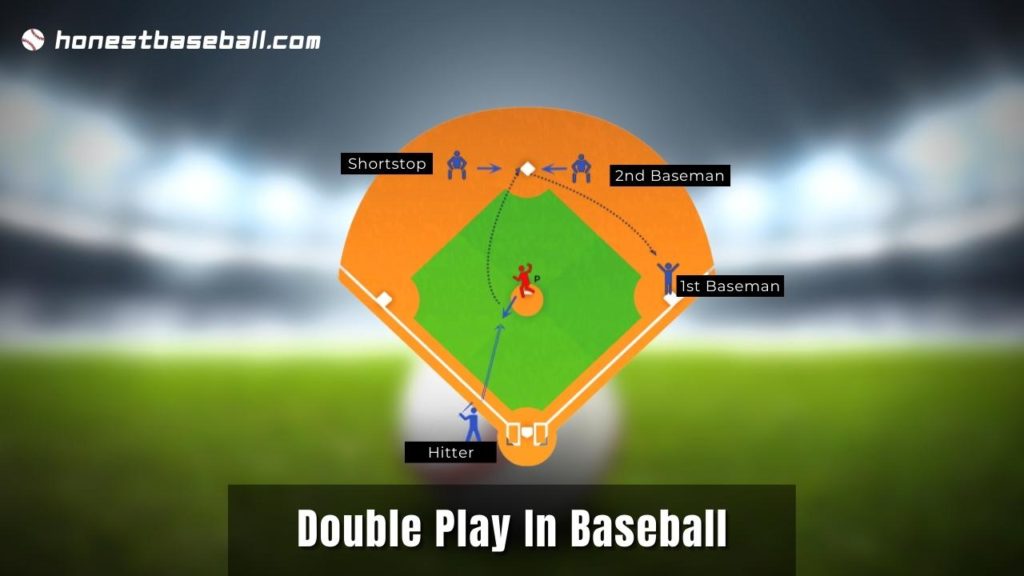
The particular plays are actually coordination of action made by different position players in baseball.
In general, when the pitcher in baseball and 2 fielders combined try to get outs of 2 batter’s side players (1 hitter and 1 runner) in a single play, it’ll be counted as a double play.
No matter how better a baseball hitter you’re than others, the opponent can get a double play with unpredicted strategies.
“Offensive players are the hitting team members playing on the ground - the hitter and the other basemen.”
For instance, assume a hitter takes a ground ball shot. Then a fielder tosses the ball towards the 2nd baseman.
Here, he gets one out if he can make the throw before the base runner reaches the plate or stopper (common terminologies in baseball).
Then the following 2nd baseman tosses the ball toward the 1st baseman in order to bring home another out. It’s a typical scene of double plays.
However, things can be different in some situations. The following example consists of a force-out, which only occurs if one of the offensive players is biased to leave his place. And it happens when the hitter leaves the plate and becomes a base runner.
Without the name, players also call this play by different names. Such as,
- Pitcher’s best friend
- Turned 2
- Twin killing
- Doubled up
Why Does Each Defensive Position Have A Number?
In baseball, every defensive position has denoted numbers. During the match, the scorekeeper records what happened during the game and the number & position.
The use of player numbers helps to make scorekeeping easier. That’s how they show off those MLB records.
This system is shorthand, and a scorekeeper can write position names at any point. The system also improves clarity and consistency in scorebooks when calculated as a game statistic.
But there is another position without a number, which is the designated hitter, as he makes no offensive play.
There are a total of 9 positions. These can be a direct part of the plays depending on different circumstances. Let’s take a look at the different defensive positions and their numbers.
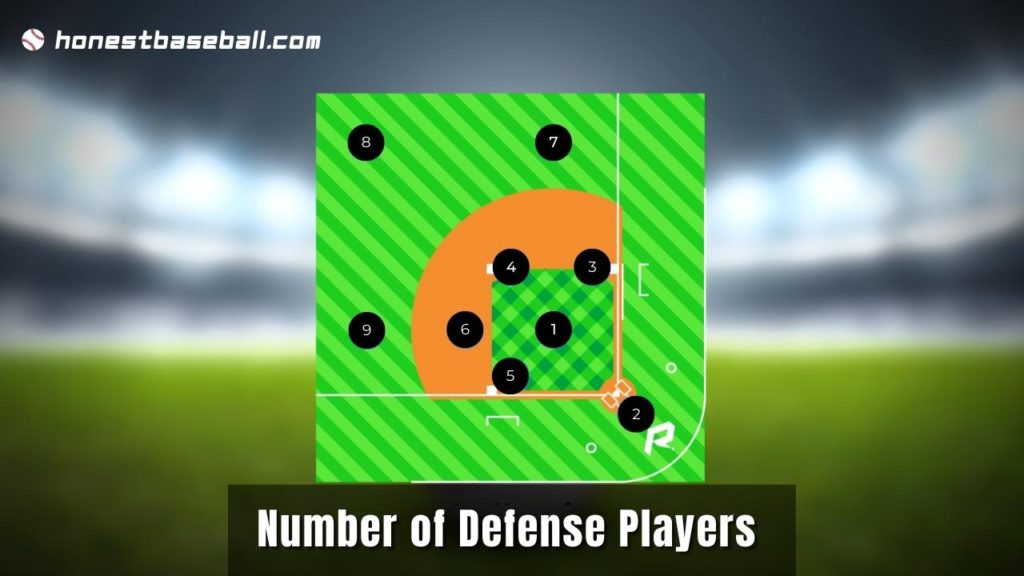
Pitcher (1)
When it comes to double play, it’s a central and typically participated role. Most of the time, when the hitter shot a ball, it would be fielded by any of the defensive players and then thrown back to the pitcher.
Learn how to become a better pitcher by practicing pitching alone in this article.
Catcher (2)
The catcher role is somewhat a 2nd or 3rd spot in double plays. Sometimes situations occur when 3rd and 1st base runners simultaneously try to reach their following plate after the batter hits the ball.
Let’s assume a ground ball first goes to any of the fielders. Afterward, this fellow will fire it to the catcher to make out the 3rd base runner.
And then, if the hitter or the other base runner still hasn’t reached their next base, the catcher throws the ball to any of the basement to get another force out. That’s how the catcher plays a vital role in a double play.
Learn how you can play catcher like professional baseball players in this article.
1st Baseman (3)
It’s the guy standing on 1st base, next right to the catcher’s plate. In most MLB double plays, 1st baseman or 3 is a ubiquitous part. If you see a baseball score with a denoted number of 3, it implies that the 1st baseman participated in making that particular play.
2nd Baseman (4)
Like the first one, the second baseman is also an inevitable role among the 9 defense positions. The responsibility of this guy is to cover a large zone between the shortstop, 1st base, right (7), and central fielders (8).
Second basemen are also liable to tackle 1st and shortstop areas sometimes in intense playing moments.
3rd Baseman (5)
Similar to the 1st and 2nd baseman, the 3rd baseman also stands in the infield, more specifically, on the catcher’s left side, between the shortstop.
Throughout my minor league journey, I’ve seen that the third baseman is the most active assist among the other infield positions in baseball. However, I wasn’t sure about the reason in my early days.
“In baseball, if any fielder touches the ball hit by the batter and throws it next to another fielder or baseman, the first fielder or his action is considered an assist.”
But as a coach, I found the answer. Since most batters in baseball are right-handed, they always try to make shots towards the opposite of the 1st base, meaning the 3rd base. It happens more especially when the hitter intends to get singles or doubles.
Shortstop (6)
The 2nd baseman or number 4 and the shortstop tackle the zone of the 2nd base, denoted by the number six. Usually, shortstop is the first role in all types of double plays that start with the number 6.
Depending on the number placement in the double play name, you’ll be able to guess when the shortstop fielder threw the ball or fielded it.
Left Fielder (7)
In baseball, you’ll see 3 players in the outfield area. The 7th or left fielder is who catches the most failed home runs. Again, the reason is the maximum right-handed hitter in baseball.
It’s one of the rarest positions in double play events, also. And guess what! Left fielders are part of scoring most unassisted plays.
Center Fielder (8)
Another numb outfielder position in a double play is 8th or the center fielder. The outfielder handles the fielding responsibility between 7 and 9 or left fielder and right fielder, respectively. In most cases, there is no assist in the plays where 8 is involved.
Right Fielder (9)
It’s the second active outfield position in baseball after the left fielder. Sometimes, the right fielder or 9 assists a double play by throwing the fielded ball to either shortstop or 1st baseman. There are also situations when right-fielders result in an unassisted double play.

Types of Double Plays In Baseball Game
There are a total of 17 DP in baseball games. Among them, some often happen in each inning, and some are pretty uncommon types. Below you can get a quick glance at each.
| Sl. | Double Play Names | Descriptions |
| 1 | 1-2-3 | First, the batted ball goes to the bowler, he tosses it to the catcher, and then he throws it to the 1st baseman |
| 2 | Fly out +Runner Out | Batted fly ball gets caught by a fielder first. Then he throws it to any baseman to get a runner out |
| 3 | Strikeout + Stole Catch | An offense tragedy where the batter gets to strike out, base runner steals a catch to save the team from a double play |
| 4 | 4-6-3 | The ball is fielded by the second baseman, then thrown to the short-stopper and first baseman, respectively |
| 5 | 3-2 | Batter hits the ball to the first baseman and expects a double. But the first baseman steps on the bag before throwing the ball |
| 6 | 3-6 | Similar to the 3-2, but the shortstop fielder replaces the first baseman role |
| 7 | 5-4-3 | Batted fly or ground ball goes to the 3rd baseman. Then he throws it to second base. The following player throws it to the 1st base guy and tries to make a force out |
| 8 | 3-2-3 | Starting from the first baseman. The ball is thrown to the catcher, who then throws it to the first baseman again |
| 9 | 3-6-3 | Similar to the 3-2-3. But the catcher role is replaced by the short stopper |
| 10 | 5-3 | The batter hits the ball, which is fielded by the 3rd baseman. He tags the base and throws the ball to the first baseman |
| 11 | Fly ball + Runner Double off | In general, the runner misses the call, and the second base runner got out during a fly and double run |
| 12 | Sac bunt play | Fielders’ denotations can be a 3 5 4, 1 5 3, and 2 6 3 double play |
| 13 | 6-4-3 | As demonstrated in the next section of the article |
| 14 | Lineout | The pitcher catches the batted ball and throws it to the first baseman to force out the following base runner |
| 15 | 3-6-1 | A ball is stopped by the 1st baseman while not stepping on the base, then thrown to the shortstop. Then he throws it back to 1st base. The pitcher should be positioned on the 1st base here |
| 16 | 6-3/4-3 + Tagged mid infielder | Shortstop or second base players stop the ball while keeping the tag to the base. Then they throw the ball to the first baseman to confirm a force out |
| 17 | 1-6-3 | Pitchers chronologically catch the batted ball and throw it to the shortstop and the first baseman. |
What’s a 6-4-3 Double Play?
Now you got an idea of the definition of a double play and all defensive players’ positions in these baseball play. So, it’s gonna be easier to understand what 6-4-3 double plays are. If following the position of the fielders, denoted by the numbers, we get,
- 6 = Shortstop
- 4 = Second Baseman
- 3 = First Baseman
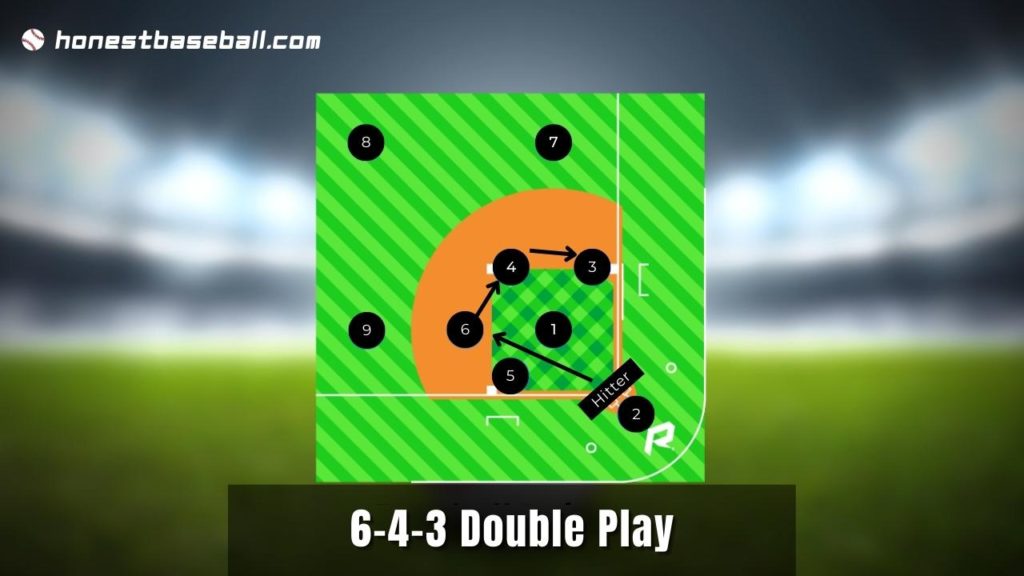
So, a 6-4-3 double play means the hitter takes a ground ball shot towards the short-stopper. Then he gives it back to the second base player, which results in the initial force out.
And instead of stopping the play there, the second baseman tosses the ball toward the 1st baseman with the intention to get the next force out (of the hitter who is trying to reach first base). That’s what a 6-4-3 baseball double play is.
6-4-3 Vs. 4-6-3 Vs. 5-4-3 Double Plays
In baseball, 4-6-3 is another common double play, often witnessed, especially in major leagues. A 4 6 3 double play can be differentiated into 2 types depending on the playing situation.
Firstly, the second baseman or secondly, the number 4 guy fields the ball first. Afterward, he throws it to the shortstop or number 6 to get the first force out.
The shortstop fields and throws it to the second baseman or number 3 to get the next force out of the batter. You can find an example of 4-6-3 double play here.
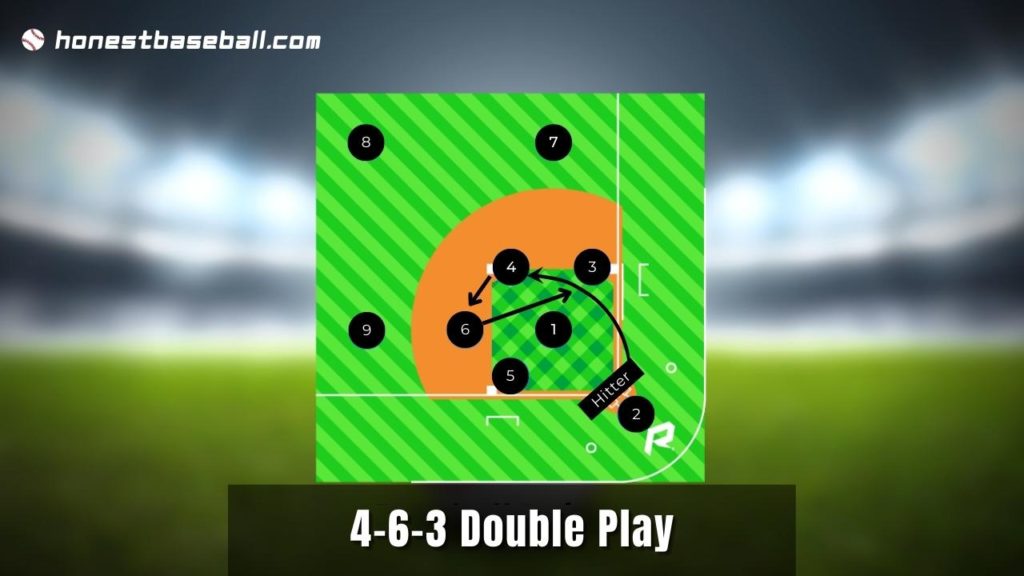
On the flip side, in a 5-4-3 double play, the play starts with the hitter taking a shot, which ends with the third baseman. After getting the first out or not, the following player tosses it to the next destination (second baseman), and then he throws it towards 1st base.
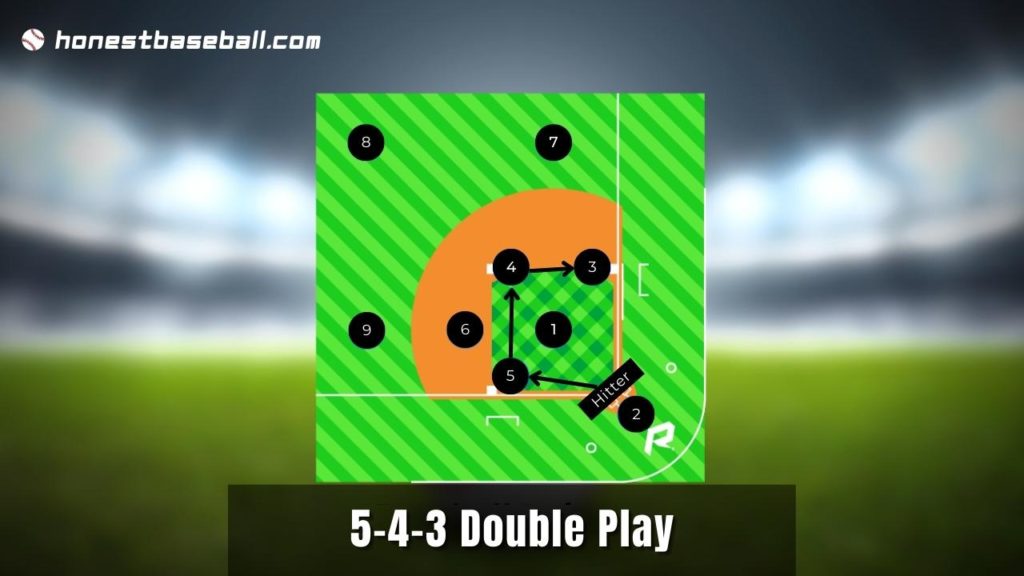
To learn differentiating factors between the 6 4 3 and 4 6 3 double play, look at the table below.
| 6-4-3 Double Plays | 4-6-3 Double Plays | 5-4-3 Double Plays |
| Shortstop is the first destination of the ball | 2nd baseman is the first destination of the ball | 3rd baseman is the first destination of the ball |
| Shortstop fielder throws the ball to 2nd baseman to get the first force out | The second base fellow throws the ball toward the shortstop fielder to get the first force out | 3rd baseman throws the ball to the 2nd baseman to confirm a force out |
| 2nd baseman throws the ball to the 1st base fielder gets forced out of the hitter | The shortstop fielder also throws the ball to the 1st base fielder to get the hitter out | 2nd baseman throws the ball to the 1st baseman to confirm the second force out |
“In these plays, the force out may or may not be successful. Even if the first or second destinations don’t confirm a force-out, the following players can continue throwing the ball to the forward base.”
How Do You Score An Unassisted Double Play?

You can score an unassisted double play as an infielder, mostly. Although it’s one of the rare double plays, there is the maximum chance of a double play if you position on shortstop or second baseman.
However, there are also exceptions. Sometimes first and third basemen can also score unassisted doubles if their luck favors them.
If considering the common unassisted plays, there must be a line drive catch or soft catch by any of the above fielders, especially the second baseman or short stopper. After getting the catch, the player gets the batter out.
Then to get the runner out, the player can tag the second base if achieved before the runner reaches the base.
I mentioned above that mostly infielders score on these plays. But the scene can be different too. In some cases, an outfielder also can get an official score on this rare double play.
Most unassisted plays I’ve seen by outfielders during my career weren’t involving line drive. Instead, these were fly balls.
Frequently Asked Questions
What is the rarest double play?
Among the rarest doubles, 3-2-3 is one unique. Here, the hitter takes a sharp ground ball hit in the 1st base area. So, as expected, the 1st baseman or 3 fields the ball and throws it to the catcher or the 2 in order to get the hitter out of the game.
Following the play, number 2 then throws the ball towards the 1st baseman with the same goal to make the runner/batter out of the game.
What is a 635 double play?
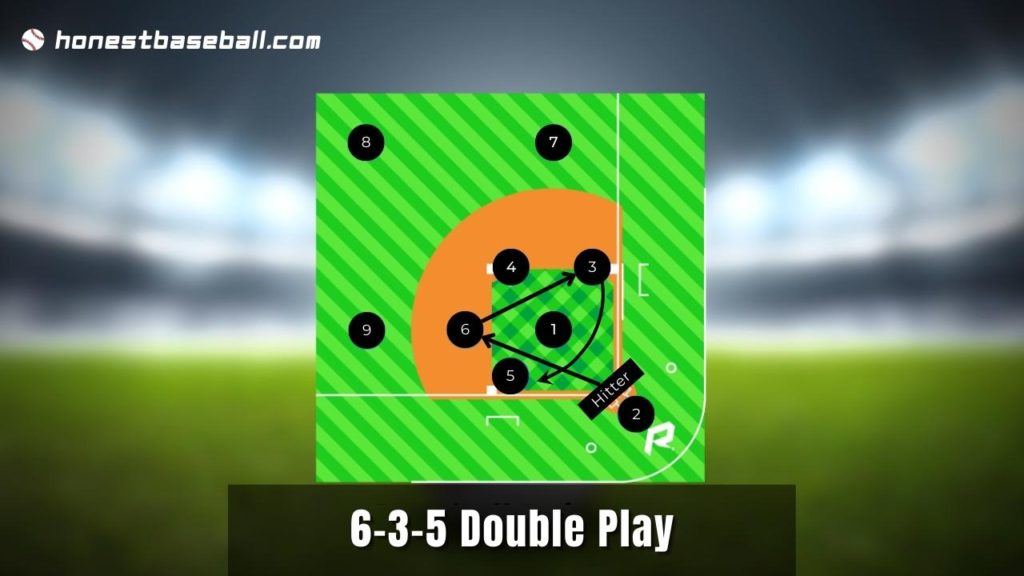
635 or 6-3-5 is a very thrilling type of double play. The number denotes the players or fielders involved during the play. So, if following the fielding order of MLB baseball, 635 denotes shortstop, 1st baseman, and third base player involvement, respectively.
In 635 plays, the batter hits the ball to the shortstop area. The fielder throws the ball to the 1st baseman to get the batter out.
Then the 1st baseman throws the ball to the third baseman with the intention of getting the runner out of the game.
Has there ever been a 3 2 8 double play?
Well, yes, there were multiple 3-2-8 double plays in professional baseball game history. The most recent one I’ve seen is from 2020. The Cardinal Indians scored it in the 2nd inning. And it happened due to the lousy base running.
Runner on third base, he broke for a home run like he wasn’t going on contact. Goldie quickly came home with it, and they tried to cut him off. Yadier (the catcher) checked out Ramierez on the third base. Then he moved on to Jose Altuve to get the out at shortstop.
Why is shortstop 6 and not 5?
At the beginning of baseball, the shortstop was actually the 4th outfielder. But over time, MLB identified the position wouldn’t make sense as a shortstop. It’s because compared to the baseball field size, it would be stressful for the runners to run along the bases at that distance if they make the shortstop at 4.
So, the federation changed it inside the infield area along with 3, 4, and 5 without keeping the denoted number changed.
Why is shortstop so important in a double play?
When I studied the double play history in baseball, I found some interesting facts in common. Most double plays consist of the participation of the shortstop. The reason is pretty logical, as most batters are right-handed.
Besides, when batters try to score singles, they make line drives or slight fly drives between the shortstop and second base area.
And because of that, you’ll see most shortstop participation in a double play. So, it’s needless to say shortstop is an integral part of double plays.
Wrapping Up
No doubt, double plays are one of the most exciting moments in baseball games. And 6 4 3 double play is somewhat a cherry on this cake. According to Major League Baseball scoreboard research, there is a high probability of one 6-4-3 play in each inning. With a proper baseball practice plan, you can learn how to score a double play in baseball.
Check out more:
Baseball Field Overview | A Brief Guide To Baseball Fields | Honest Baseball
10 Best Team Record In MLB History (With 6 Player’s Stats)
Positions On The Baseball Field Explained By A Coach [Updated 2022]

Hello everyone. My name is Jason Butler, and I live in California, America. I was a professional AAA Minor League Baseball player. I lost my chance of playing MLB for injury issues, but I did not lose my love for baseball. I attended the coaching training program and am now working as a coach in a small school in San Diego.
I always love to share my experience and knowledge if that can help you. Play baseball, and stay fit.
